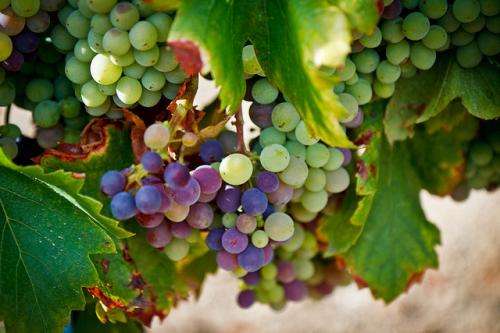How climate change is shifting time for animals and plants

Every Spring, the blanket of Australian alpine snow starts to melt, and the Mountain Pygmy Possum wakes up from its seven-month-long hibernation.
Naturally after so long under the snow, its first thought is to find food. But over the last few years, the snow's been melting earlier, and an important food source – the Bogong moth – is arriving later on its yearly migration, leaving these endangered possums to go hungry.
In Australia, spring-time events on the land, as well as in freshwater and marine systems are now generally occurring earlier than they used to.
The time at which certain events happen in the lives of animals or plants – such as when moths or birds start their annual migration, or when plants flower – is mostly influenced by temperature, although day length and rainfall can also play a part.
The timing of these life cycle events and their interaction with the seasonal climate is called phenology.
Since phenology is sensitive to small changes in the environment, any changes in timing can help highlight the impact of climate change on natural and managed systems. You can help record these changes through the ClimateWatch app developed by the Bureau of Meteorology, Earth Watch Institute and the University of Melbourne.
Starting early
The life cycles of many plants and animals affect our day-to-day lives, and understanding these cycles is important for our survival. To successfully produce food or hunt, we need to understand animal behaviour and plant growth – and how these are linked to the environment.
In Australia, the breeding season and migration of many birds is beginning earlier by an average of 2.6 days per decade.
For many Australian plants, flowering, fruiting and harvesting is starting earlier by an average of 9.7 days per decade.
Flowering also means the presence of pollen in the air. What was once thought of as the "pollen season" is also changing as the climate changes.
For many people, airborne pollen is a source of suffering – for asthma sufferers who are allergic to pollen, and for those with hay fever, pollen can mean sneezing and wheezing.
In North America the length of the ragweed pollen season, one of the biggest causes of hay fever, is now 13-27 days longer than in 1995 (depending on location). The longer pollen season is linked to recent warming, delays in the first frost of Autumn, as well as the number of frost-free Autumn days.
Similar changes have also been found in Europe. Researchers in Italy found that the pollen season for several allergenic plants was up to 85 days longer in recent decades, with the pollen season starting earlier now than in the 1980s.
Wine grapes in southern Australia are also maturing earlier – on average eight days earlier per decade than they were in 1985. These changes are related to increasing air temperatures and decreasing moisture in the soil.
The grape growing season is likely to shorten which will mean changes to the areas suitable for particular varieties. At least one winery has already bought vineyards in Tasmania as a way of dealing with a warming climate.
Discover the latest in science, tech, and space with over 100,000 subscribers who rely on Phys.org for daily insights. Sign up for our free newsletter and get updates on breakthroughs, innovations, and research that matter—daily or weekly.
A Northern Hemisphere bias
Most of the reports of changes in species phenology have come from the Northern Hemisphere. This may be partly due to the dramatically visible seasonal changes over this region (first snow for example).
"Firsts" in these regions, such as the arrival of migratory birds or flowering, are very obvious and easy to record.
Some phenological events are also documented because of cultural significance. In Japan, the date of the first bloom of cherry blossoms is known from as far back as the ninth century.
Changing species relationships
Box-ironbark forests are unusual in that they have trees which flower during winter. These flowers are a vital food source for nectar-dependent woodland birds.
Occasionally, these ironbarks fail to flower, leaving dependent woodland birds short of a vital food supply.
Historical records from 1945 to 1970 of red ironbark flowering in the Rushworth Forest in Victoria, indicate that no flowering occurred in only four of the 26 years.
However, a more recent study from 1997 to 2007 of red ironbark flowering found that the number of years with no flowering had increased. Over the 11-year study, there were four years with no flowering, with three of the failures occurring in the final six years. These flowering failures may have contributed to recent declines in the number of woodland birds in that forest.
Despite these snapshots, an Australia-wide understanding of the impacts of climate change is needed, including records of phenology from many more regions.
A new app means you can now contribute to recording species phenology in Australia. The Bureau of Meteorology, Earth Watch Institute and the University of Melbourne have developed ClimateWatch, where you can record the life cycle events of plants and birds, spiders and whales and more.
Source: The Conversation
This story is published courtesy of The Conversation (under Creative Commons-Attribution/No derivatives).
![]()



















